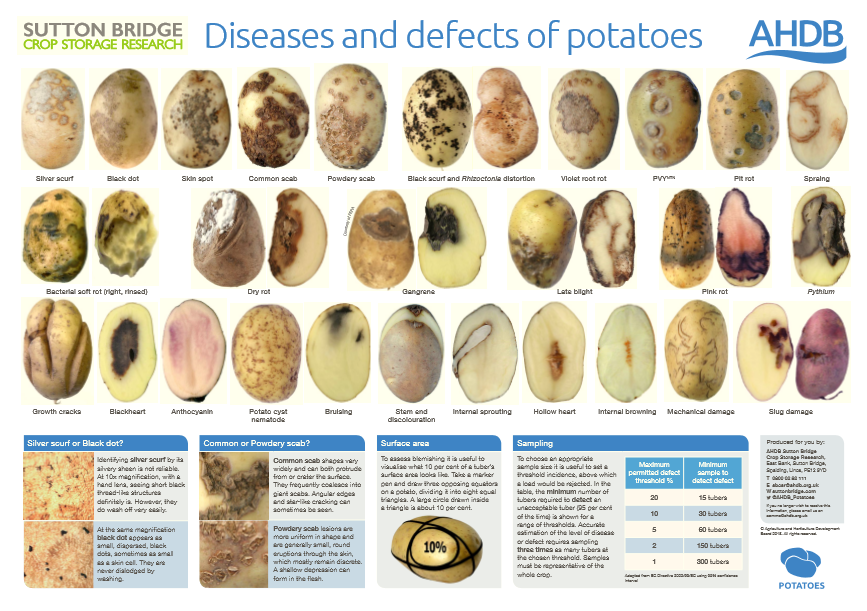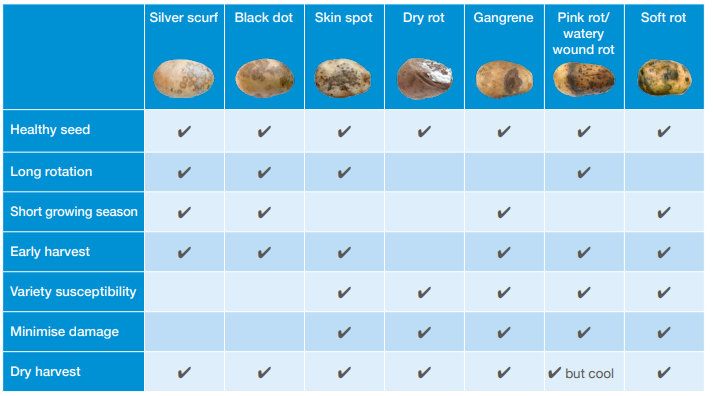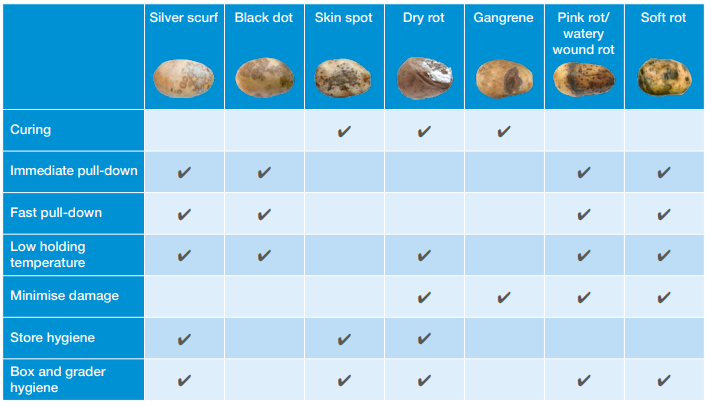Please click here to access the main AHDB website and other sectors.
- Home
- Potato diseases and defects
Potato diseases and defects
Identify the symptoms caused by fungi, fungal-like organisms and bacteria that are capable of causing disease in potato tubers.
Symptoms may be present at harvest, some diseases spread through stored tubers and some will only develop significantly during storage.
The most serious are the tuber rots, but there are also economically damaging “blemish” diseases.
Read levy-funded research reports on blemish diseases
Controlling disease is a fundamental component of storage management. Few diseases originate in store.
They mostly come from two primary sources: the seed or the soil. However, many of the disease problems affecting the premium markets can develop to some degree in store and, if not controlled, the consequences can be catastrophic, either in terms of physical breakdown of the crop or in loss of market value.
There are seldom many storage scenarios where there aren’t potential disease hosts, even with the use of clean seed and resistant varieties.
Good skinset is crucial, as disease inoculum is often present and control of the microclimate is essential for management of disease risk. Reducing the chances of disease development can be achieved through best practice measures, which include:
- Timely burn down to ensure robust set skins for storage
- Efficient harvest allowing store to be closed quickly
- Optimised airflow for effective drying and cooling
- Avoidance of condensation
- Good store and grader hygiene
There are pre storage control strategies to prevent disease (table 1) and there are also strategies within store to provide control (table 2)
Table 1: Pre-storage control
Table 2: Control during storage
More information
Download the Store Managers' Guide for more on control strategies
Potato diseases and defects poster
The potato diseases and defects poster is available to download.
Download our potato diseases and defects poster






